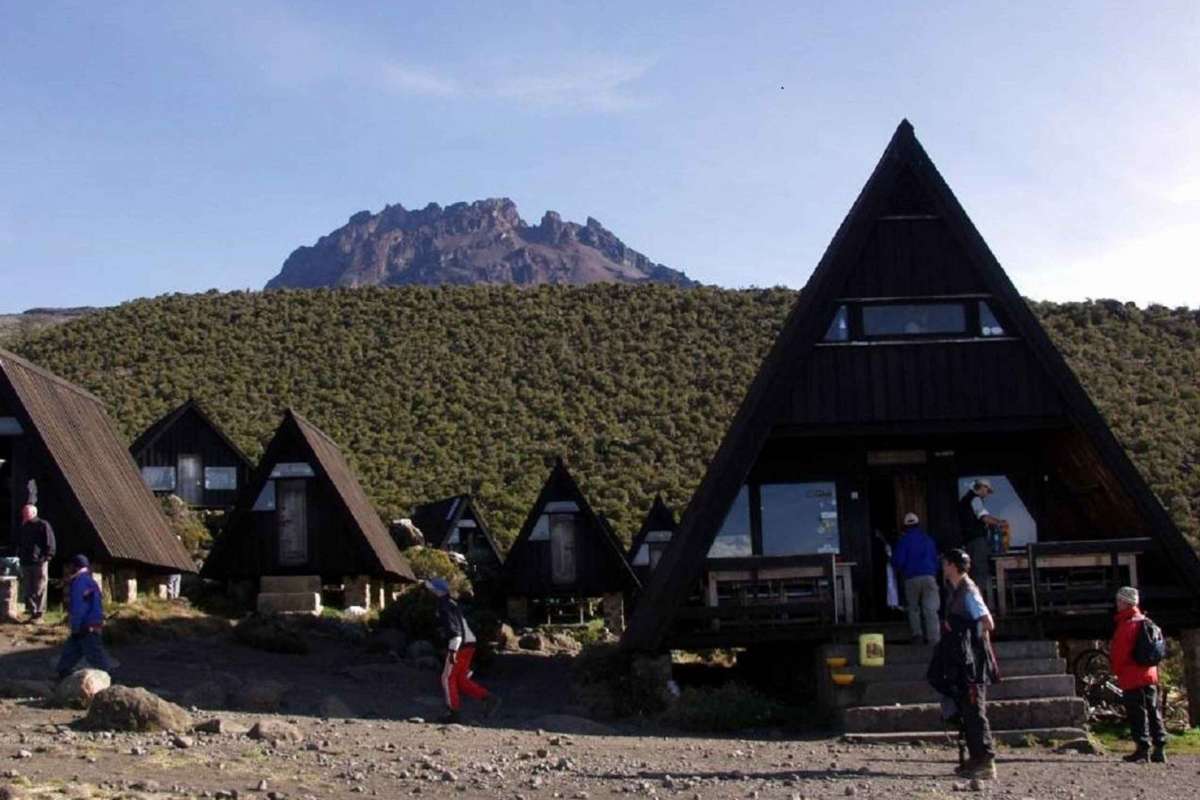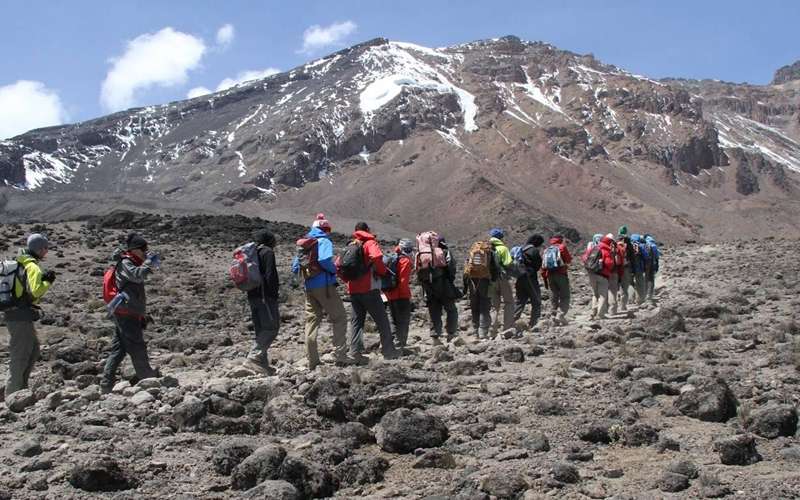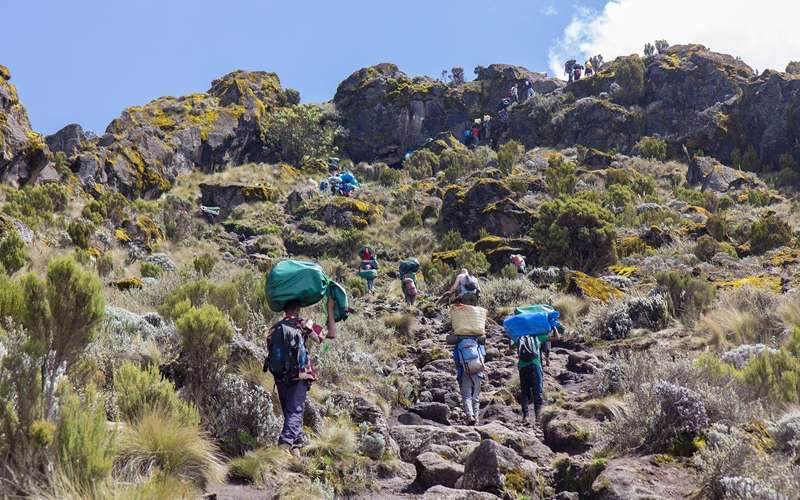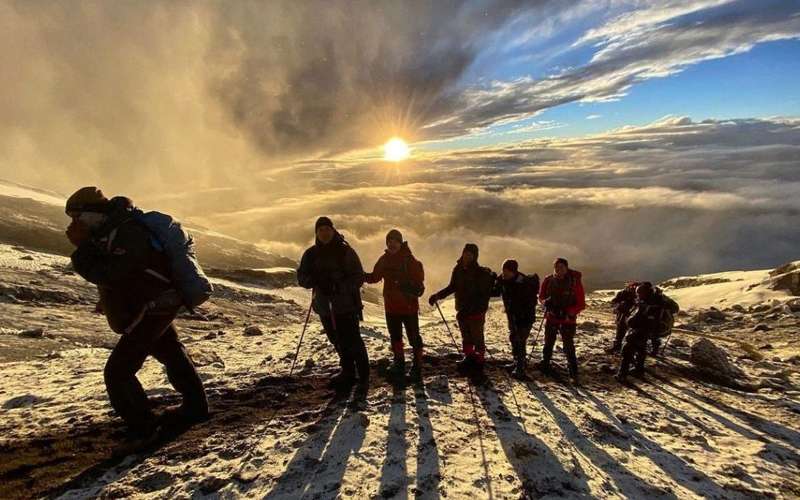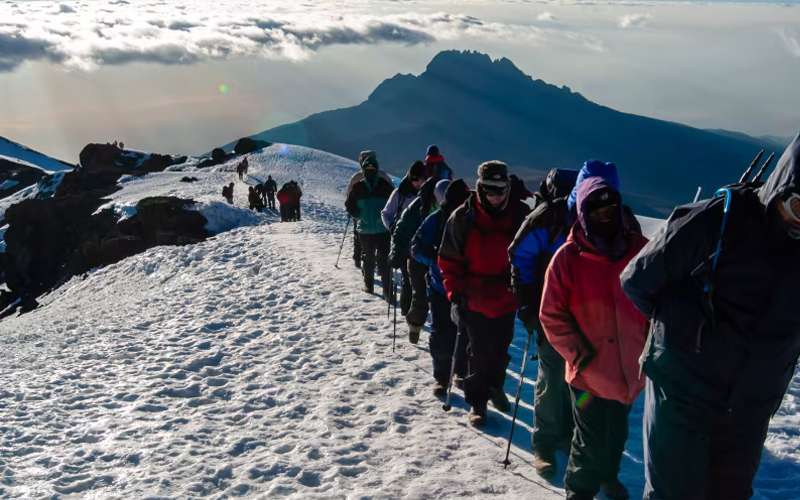Mount Kilimanjaro, standing tall at 5,895 meters (19,341 feet), is Africa’s highest peak and a bucket-list destination for adventurers worldwide. Known as the “Roof of Africa,” this majestic mountain offers several routes to the summit, each with its unique challenges and experiences. The Marangu Route, often called the “Coca-Cola Route,” is one of the most popular paths to the summit due to its relative ease and well-established facilities.
Why Choose the Marangu Route?
- Unique Features: The Marangu Route is unique because it offers hut accommodations instead of camping, providing a bit more comfort and shelter from the elements. The route is known for its scenic beauty, passing through diverse ecological zones from lush rainforests to alpine deserts and finally to the arctic summit zone.
- Popularity and Accessibility: The Marangu Route is one of the most accessible routes on Kilimanjaro, making it a favorite among first-time climbers. Its gradual ascent allows for better acclimatization, and the trail is well-trodden, reducing the risk of getting lost. The route’s popularity means there are plenty of resources and support available, enhancing the overall trekking experience.
Preparation for the Climb
- Physical Fitness and Training: Climbing Kilimanjaro requires good physical fitness and stamina. It’s essential to follow a training regimen that includes cardiovascular exercises, strength training, and hiking with a backpack to simulate the trek. Regular exercise will help build the endurance needed for the climb.
- Necessary Gear and Equipment
Packing the right gear is crucial for a successful climb. Key items include:
- Clothing: Layered clothing to adapt to varying temperatures, including thermal base layers, insulating mid-layers, and waterproof outer layers.
- Footwear: Sturdy, comfortable hiking boots and quality trekking socks.
- Accessories: Hats, gloves, sunglasses, and trekking poles.
- Backpack: A daypack for personal items and a larger pack for porters to carry.
Detailed Itinerary of the Marangu Route
- Day-by-Day Breakdown
- Day 1: Marangu Gate to Mandara Hut
- Elevation: 1,870m to 2,720m
- Terrain: Rainforest
- Distance: 8 km (5 miles)
- Day 2: Mandara Hut to Horombo Hut
- Elevation: 2,720m to 3,720m
- Terrain: Moorland
- Distance: 12 km (7.5 miles)
- Day 3: Horombo Hut to Kibo Hut
- Elevation: 3,720m to 4,703m
- Terrain: Alpine Desert
- Distance: 10 km (6.2 miles)
- Day 4: Kibo Hut to Uhuru Peak to Horombo Hut
- Elevation: 4,703m to 5,895m (summit) then down to 3,720m
- Terrain: Arctic Summit
- Distance: 20 km (12.4 miles)
- Day 5: Horombo Hut to Marangu Gate
- Elevation: 3,720m to 1,870m
- Terrain: Rainforest
- Distance: 20 km (12.4 miles)
- Key Highlights and Landmarks
- Marangu Gate: The starting point for the trek, where climbers register and begin their journey.
- Maundi Crater: Near Mandara Hut, offering a beautiful side trip with stunning views.
- Zebra Rocks: Unique striped rock formations near Horombo Hut.
- Gilman’s Point: A significant milestone on the way to Uhuru Peak, offering breathtaking views.
Acclimatization and Altitude Sickness
- Importance of Acclimatization: Proper acclimatization is crucial to prevent altitude sickness. The Marangu Route’s steady ascent allows the body to adjust gradually to higher altitudes, increasing the chances of a successful summit.
- Tips for Preventing Altitude Sickness
- Hydration: Drink plenty of fluids to stay hydrated.
- Pacing: Walk slowly and steadily, allowing your body to adjust.
- Diet: Eat light, high-energy meals to maintain your strength.
- Medication: Consult with a healthcare provider about taking altitude sickness medication like Diamox.
Guides and Porters
- Role of Guides and Porters: Guides and porters play a vital role in the Kilimanjaro climb. Guides provide expertise, support, and encouragement, while porters carry gear, set up huts, and ensure climbers’ comfort and safety.
- Tipping and Etiquette: Tipping is customary and appreciated. It’s a way to acknowledge the hard work and dedication of the guides and porters. Typically, tips are given at the end of the climb, with amounts varying based on the length of the trek and the size of the group.
Campsites and Huts Along the Marangu Route
- Description of Each Campsite and Hut
- Mandara Hut: Located in the rainforest, offering dormitory-style huts with basic amenities.
- Horombo Hut: Situated in the moorland zone, providing larger huts with communal dining areas.
- Kibo Hut: Positioned in the alpine desert, the final staging point before the summit push.
- Facilities and Amenities: The huts on the Marangu Route offer dormitory-style sleeping arrangements, dining facilities, and basic sanitation amenities. Some huts may also provide charging stations and small shops for essential supplies.
Wildlife and Flora on the Marangu Route
- Unique Species and Vegetation: The Marangu Route passes through diverse ecosystems, each home to unique wildlife and flora. From colobus monkeys in the rainforest to giant lobelias and senecios in the alpine zones, climbers can encounter a variety of species along the way.
- Conservation Efforts: Tanzania’s national park authorities and conservation organizations work tirelessly to protect Kilimanjaro’s natural habitats. Climbers are encouraged to respect wildlife, stay on designated trails, and adhere to conservation guidelines.
Cultural Experiences
- Interactions with Local Communities: Climbing Kilimanjaro offers opportunities to interact with local Chagga communities who live on the mountain’s lower slopes. Visitors can learn about their traditions, agriculture, and daily life, enriching the trekking experience.
- Cultural Significance of Kilimanjaro: Mount Kilimanjaro holds deep cultural significance for local communities and is considered a sacred site. The mountain’s presence in folklore, traditions, and daily life adds a rich cultural layer to the climbing experience.
Safety and Challenges
- Common Challenges Climbers Face: Climbers may face various challenges, including altitude sickness, fatigue, and harsh weather conditions. Mental and physical resilience are crucial for overcoming these obstacles.
- Safety Precautions and Emergency Procedures: Safety measures include following the guides’ instructions, staying hydrated, and pacing oneself. Emergency procedures are in place for severe altitude sickness or injuries, with guides trained in first aid and rescue operations.
Best Time to Trek
- Seasonal Weather Conditions: Kilimanjaro’s weather varies by season. The dry seasons (June to October and December to February) offer the best climbing conditions, with clear skies and lower precipitation.
- Recommended Months for Climbing: The best months for climbing the Marangu Route are January, February, and September, offering favorable weather and fewer crowds. However, each season has its unique appeal, and climbers can choose based on personal preferences.
Sustainable Trekking Practices
- Leave No Trace Principles: Climbers are encouraged to follow the Leave No Trace principles, which include packing out all trash, minimizing campfire impact, and respecting wildlife. Sustainable trekking ensures the preservation of Kilimanjaro’s pristine environment for future generations.
- Supporting Local Economies: By choosing local guides and porters, purchasing locally made goods, and staying in community-run lodges, climbers can support the local economy and contribute to sustainable tourism practices.
The Marangu Route offers a unique and rewarding trekking experience on Kilimanjaro, combining breathtaking scenery, diverse ecosystems, and cultural richness. By preparing adequately, respecting the environment, and embracing the journey, climbers can achieve the ultimate goal of reaching Uhuru Peak while contributing to the preservation of this natural wonder.
FAQs
How long does it take to climb the Marangu Route?
The Marangu Route typically takes 5 to 6 days to complete, including time for acclimatization and summit attempts.
What is the success rate for climbers on the Marangu Route?
The Marangu Route boasts a success rate of approximately 80%, higher than many other routes due to its acclimatization-friendly itinerary and the use of huts.
How difficult is the Marangu Route compared to other routes?
The Marangu Route is considered moderately difficult, with a mix of challenging terrain and gradual acclimatization, making it suitable for climbers with good physical fitness.
What should I pack for the Marangu Route trek?
Essential items include layered clothing, sturdy hiking boots, a good-quality sleeping bag, trekking poles, and sufficient water and snacks. A comprehensive packing list can help ensure you’re well-prepared.
Can beginners successfully climb Kilimanjaro via the Marangu Route?
Yes, with proper preparation, training, and a positive mindset, beginners can successfully climb Kilimanjaro via the Marangu Route. Engaging experienced guides and following acclimatization protocols is key to a successful ascent.
For an unforgettable Tanzanian safari experience, explore the following national parks on our page:
– Tarangire National Park
– Lake Manyara National Park
– Arusha National Park
– Serengeti National Park
Discover detailed insights and tips to make the most of your visit to these remarkable natural wonders.


